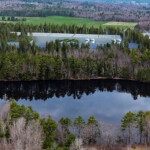For the first time, an orange roughy fishery has been certified to the standards set by the Marine Stewardship Council and received the MSC check-mark, or “tick.”
The New Zealand’s three largest orange roughy fisheries, representing about 60 percent of New Zealand’s total catch of orange roughy, were submitted for appraisal by Seafood New Zealand and deemed eligible to carry the MSC ecolabel, according to the organization and MSC.
The certification represents a major turnaround for orange roughy fishing in New Zealand. In the 1980s, management of these fisheries was based on the assumption that orange roughy are fast growing and relatively productive, according to Seafood New Zealand. Since then, they have proven to be slow-growing and to have low productivity.
“So these early approaches didn’t work – resulting in catch limits being set too high and their stocks declining in size,” the group said George Clement, Chief Executive of Deepwater Group, a non-profit organisation representing New Zealand’s major deepwater quota owners.
“To ensure the long-term productivity of this fishery – for every 100 adult orange roughy in New Zealand, we harvest less than five each year, leaving at least 95 to ensure that these stocks remain healthy for the future,” Clement said.
The three orange roughy stocks were certified by MSC with conditions that require further evidence, including that one shows it stays within target population levels, that two fisheries do cause unacceptably negative harm to deepwater corals, and that each of them pass external reviews of their management systems.
“We are confident that these three orange roughy stocks have been rebuilt and are now within the management target population level where they can be fished sustainably. The external review has been commissioned and completed, contracts are in place to update the stock assessments and plans are in place to provide additional information on corals,” Clement said.
Clement said that orange roughy produce some NZD 60 million (USD 42.9 million, EUR 40.6 million) of New Zealand’s NZD 1.8 billion (USD 1.28 billion, EUR 1.22 billion) in annual earnings from seafood exports. With the certification, more than 70 percent of New Zealand’s deep-water catch is now certified as sustainable by the MSC, including the fisheries for hake, hoki, ling and southern blue whiting, he added.
“This certification signals to the world that collaboration among industry, Māori iwi leaders, government, scientists and other interest groups has the power to improve the health of fish stocks and ensure their sustainability,” MSC’s Asia Pacific Director Patrick Caleo said. “We believe that rewarding positive change through our certification program and ecolabel is essential if we are to ensure healthy oceans.”
The New Zealand orange roughy fisheries underwent two years of review and assessment by MRAG Americas, an independent assessor. The MSC also requires certification bodies to seek and consider input from all stakeholders and a peer review by two independent experts.
Still, the certification decision was met by harsh criticism from some conservation groups, including the Deep Sea Conservation Coalition, New Zealand’s ECO and Greenpeace New Zealand.
“This is a farce and the public can no longer have confidence in MSC certification” DSCC founder Matthew Gianni said in a press release. “If the MSC can certify this fishery, which threatens to destroy deep sea corals and other long-lived and vulnerable deep sea species and habitats, as ‘sustainable’ and describe the fish as ‘responsibly caught’, then it lacks any credibility.”






